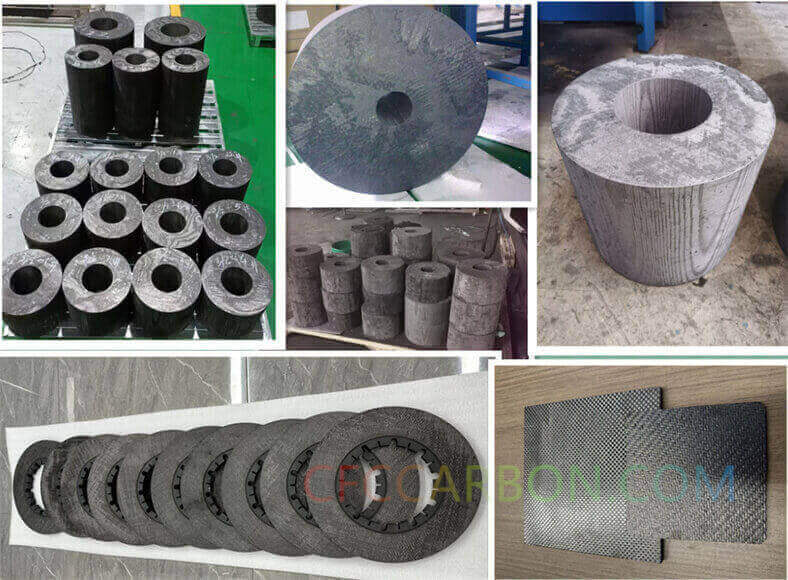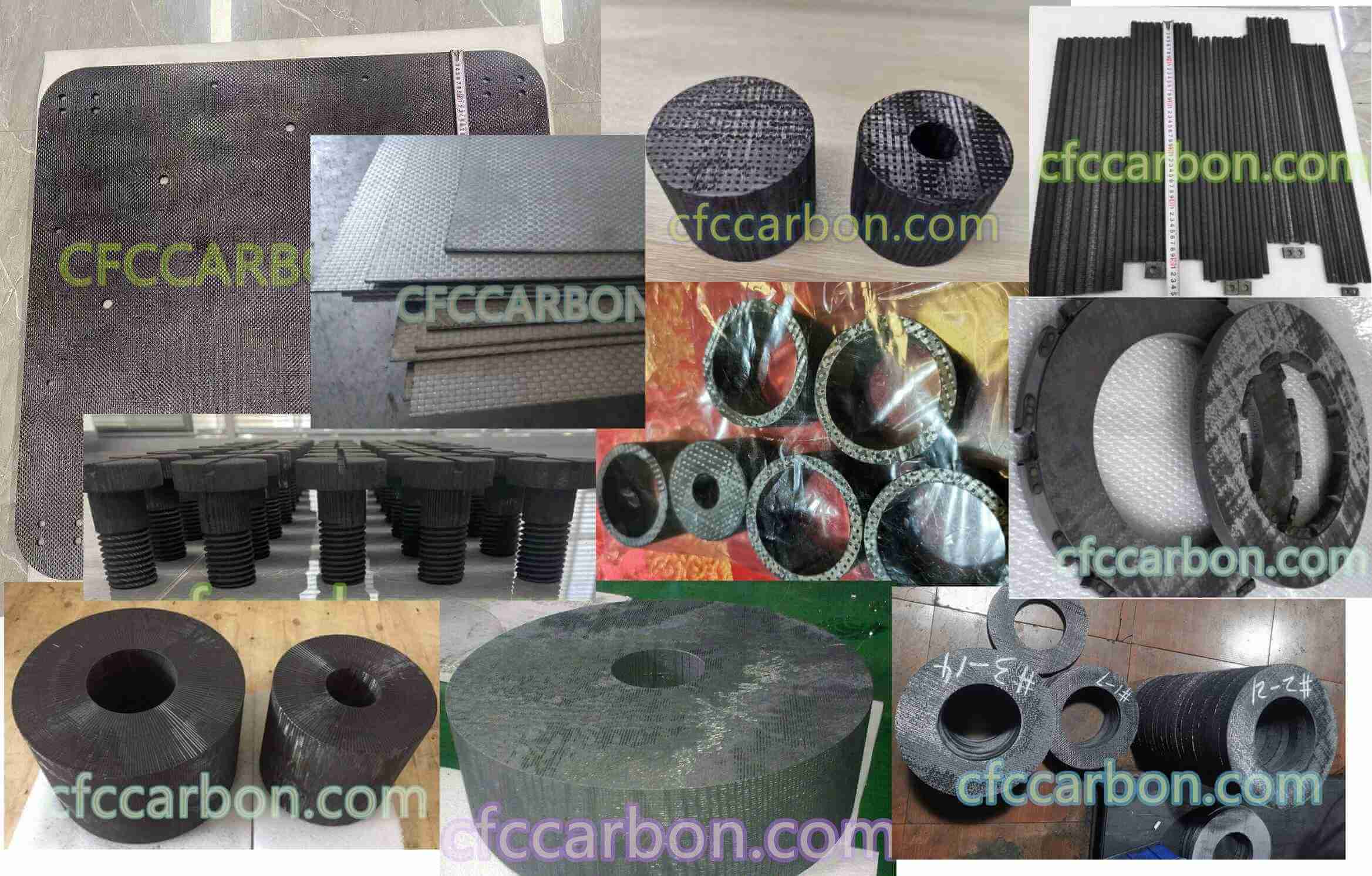Advancements in Carbon-Carbon Composites: Overcoming Oxidation Challenges for Aerospace Dominance
By CFC Carbon R&D Team | May 17, 2025
1. What Are Carbon-Carbon Composites?
Carbon-carbon composites (C/C composites) are advanced materials composed of carbon fibers reinforced within a carbon matrix. This

3D 4D carbon fiber composite material manufacturer factory -airplane brake disc plates sheets U L profiles-2D(s)
unique structure combines high-temperature stability (up to 2,200°C), exceptional strength-to-weight ratios, and resistance to thermal shock, making them indispensable in aerospace, defense, and industrial applications38. CFC Carbon, a leading global manufacturer, produces 2D, 2.5D, 3D, and 4D C/C composites with densities ranging from 1.40 to 1.95 g/cm³, tailored for aircraft brakes, rocket nozzles, and thermal insulation systems.
2. Manufacturing, Classification, and Applications
Production Techniques
C/C composites are fabricated through two primary methods:
-
Chemical Vapor Infiltration (CVI): Hydrocarbon gases like methane are decomposed to deposit carbon onto preforms, ensuring uniform matrix formation.
-
Liquid Polymer/Pitch Pyrolysis: Thermosetting resins (e.g., phenolic) or coal-tar pitches are carbonized under high temperatures, followed by iterative densification cycles to minimize porosity.
CFC Carbon employs hybrid processes combining CVI and high-pressure impregnation to achieve ultra-dense composites (up to 1.9 g/cm³) for critical components like aircraft brake discs.
Product Classification
-
Structural Grades: 2D sheets and plates (1.4–1.6 g/cm³) for thermal insulation and heating elements.

carbon fiber composite material manufacturer in China(1)
-
High-Performance Grades: 3D/4D architectures (1.7–1.9 g/cm³) for rocket nozzles and re-entry vehicle shields, offering enhanced fatigue resistance.
-
Functional Components: Custom profiles (U/L-shaped), screws, and crucibles optimized for semiconductor furnaces and mechanical seals.
Key Advantages
-
Thermal Conductivity: 120–200 W/m·K, ideal for heat dissipation in hypersonic systems.
-
Low Thermal Expansion: CTE <2×10⁻⁶/°C ensures dimensional stability under extreme thermal cycling.
-
Tribological Performance: Self-lubricating properties reduce wear in aircraft brakes, extending service life by 30% compared to steel alloys.
3. Oxidation Challenges and Protective Innovations
Despite their merits, C/C composites face catastrophic oxidation above 450°C, limiting their use in oxygen-rich environments. Recent research highlights two mitigation strategies:
Inhibitor Additives
Boron and phosphorus compounds (e.g., B₂O₃, P₂O₅) form protective glassy layers at 600–800°C, slowing oxidation rates by 50%.
Multilayer Coatings
-
Silicon Carbide (SiC): Deposited via chemical vapor deposition (CVD), SiC oxidizes to form SiO₂ scales, reducing oxygen permeability. CFC Carbon’s SiC-coated brakes exhibit <0.1% mass loss after 100 cycles at 1,200°C.
-
ZrB₂-MoSi₂-Al Composites: A breakthrough by Russian researchers combines zirconium diboride (high melting point) and molybdenum disilicide (self-healing SiO₂ formation). Detonation-sprayed coatings with 10% Al improve adhesion, sealing cracks caused by thermal mismatch.
4. Case Study: Aerospace Braking Systems
CFC Carbon’s 2.5D C/C brake discs, with a density of 1.6–1.8 g/cm³, are now standard in commercial aviation. These discs withstand 2,000 landings without performance degradation, reducing aircraft weight by 40% compared to steel alternatives.
5. Future Directions
-
Self-Healing Coatings: Integration of microcapsules containing Si-based precursors to autonomously repair cracks.
-
AI-Driven Manufacturing: Machine learning optimizes CVI parameters, cutting production costs by 20%.
-
Nanocomposites: Graphene-enhanced C/C materials promise 30% higher thermal conductivity for next-gen spaceplanes.
About CFC Carbon
As a government-certified manufacturer, CFC Carbon leads in military and civilian C/C solutions. Explore our portfolio at www.cfccarbon.com or contact potter@cfccarbon.com for custom inquiries.
related news /articles:
Data sheet | Properties of carbon carbon composite | 1.80g/cm3 density
Advanced Protective Coatings for Carbon-Carbon Composites
Advanced Oxidation Protection Strategies for Carbon-Carbon Composites
Introduction of high-temperature coatings on CC composite material